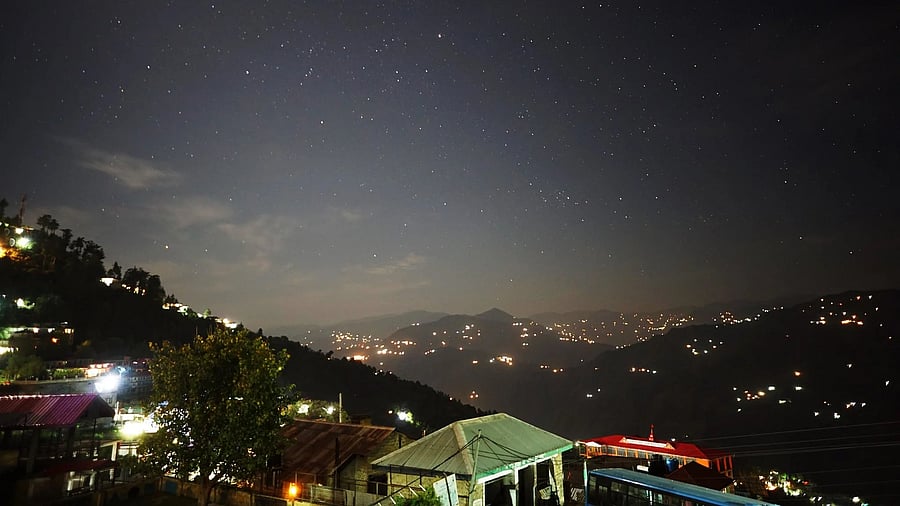
Credit: Special arangm
The power sector is a field that has been receiving significant attention across the globe, as energy demand has steadily increased. Various energy storage systems are being experimented with, and Strontium bromide hexahydrate (SrBr₂·6H₂O) is a promising new material for thermochemical energy storage.
It has significant potential for heating homes in cold regions. This hygroscopic and deliquescent salt can store low-grade thermal energy, such as industrial waste heat and solar heat.
It stores and releases energy through reversible hydration and dehydration reactions, operating effectively at temperatures below 100 °C.
At successive UN climate conferences, the global community has resolved to move away from fossil fuel dependency. Finding alternative energy sources is critical for human survival. In the domestic sector, heating, cooling, and hot water account for more than half of household energy use. While solar heat can exceed demand in summer, it often falls short in winter.
A new Indian design
At room temperature, SrBr₂·6H₂O is a white, odourless crystalline solid. Its high energy density, chemical stability, low flammability, and non-explosive nature make it a strong candidate for safe thermal storage. However, direct contact can still cause irritation, and ingestion is harmful. While it is safer than many industrial chemicals, its production and disposal pose environmental challenges. Extraction of strontium (commonly from celestine ore) and bromine (often from brines or seawater) can cause ecological disruption, and manufacturing produces waste that requires careful management.
Researchers have been developing reactors capable of storing summer heat and releasing it months later in winter. SrBr₂·6H₂O is a prime candidate for this seasonal storage approach.
A team from the Indian Institute of Technology Bombay and the National Institute of Advanced Studies (NIAS), Bengaluru, has developed a self-contained thermal storage unit comprising:
A solar collector to capture heat in summer
A reactor chamber filled with SrBr₂·6H₂O
An air circulation system to move hot or cold air through the reactor
The system is housed in a weatherproof casing designed for Himalayan conditions and insulated with glass wool. The study on reactor configuration and performance is peer-reviewed and published in scientific journals, namely ‘Applied Thermal Engineering’ and ‘Renewable Energy’.
A technology suitable for the Himalayas
The dehydration of SrBr₂·6H₂O is endothermic — it absorbs heat in the process, whereas the hydration of SrBr₂ is exothermic. When the reactor receives hot air during the summer months, SrBr2.6H2O changes to monoatomic SrBr2.H2O by absorbing heat. When winter arrives, the salt is hydrated and heat is released. Heat retention in nearly anhydrous salt (SrBr2·H2O) can last for several months and can be transported to cold places where it can be used for warming homes.
The hydrogen bond of the salt crystal that breaks in dehydration is made up in hydration, which corresponds to absorption and release of heat, respectively. The monohydrate is relatively stable for months and can be transported to remote cold regions before rehydration.
The technology is particularly suited to isolated Himalayan households that currently rely on diesel generators or firewood — both significant sources of greenhouse gases. The new reactor has not yet been commercialised or tested in homes, but the Indian Army is considering trials in high-altitude camps.
In laboratory tests, the team demonstrated six charge–discharge cycles with no loss in performance and estimates that the salt can last for around 600 cycles under controlled conditions. However, the study found that SrBr₂ readily absorbs atmospheric moisture in humid environments, causing the salt structure to crumble. In that case, it cannot be used for 600 cycles. To mitigate this, the team recommends mixing SrBr₂ with silica gel in a 3:1 ratio to maintain structural integrity.
Economic viability
Lead author Prof. Sandip Saha from IIT Bombay, Mechanical Engineering, suggests dehydrating the salt in sunny plains and transporting it to high-altitude areas for winter heating.
The Levelized Cost of Heat (LCOH) for their direct solar heating system is estimated at Rs 33–Rs 51 per kWh-thermal. Field trials in locations including Darjeeling, Dehradun, Shimla, Leh, and Manali showed the lowest LCOH in Leh at Rs 31 per kWh-thermal. In comparison, heat from diesel generators costs about Rs 50 per kWh-thermal, rising to Rs 78 when carbon penalties are included.
Why not just use solar panels? Prof. Rudrdip Majumdar from NIAS explains that this system stores heat directly, unlike photovoltaic panels, which convert sunlight into electricity and store it in batteries. In cold Himalayan nights, battery efficiency drops as chemical reactions slow, reducing output. Direct thermochemical storage avoids these losses and provides consistent heat.
While SrBr₂·6H₂O offers many advantages, it can also contaminate soil and water, posing risks to ecosystems. Proper handling, worker training, and strict safety protocols are essential to minimise environmental exposure.
(The author is the retired chief of forests, Karnataka, and a science communicator)